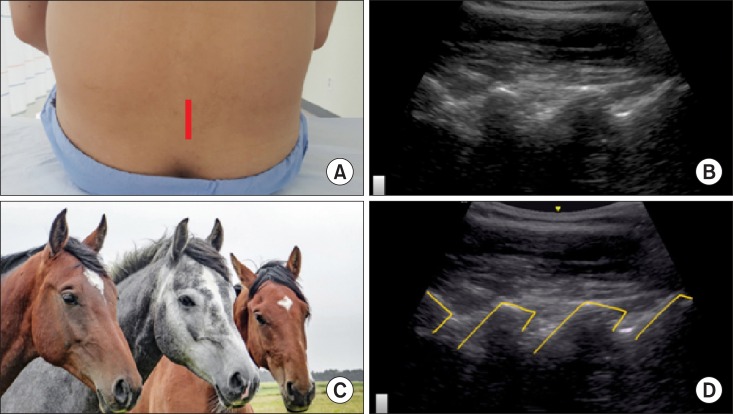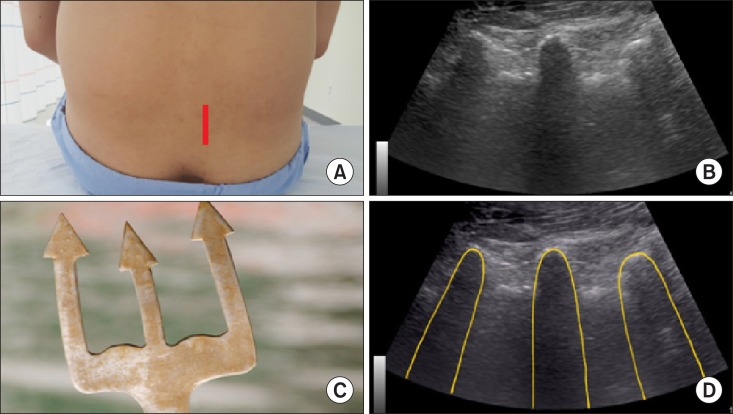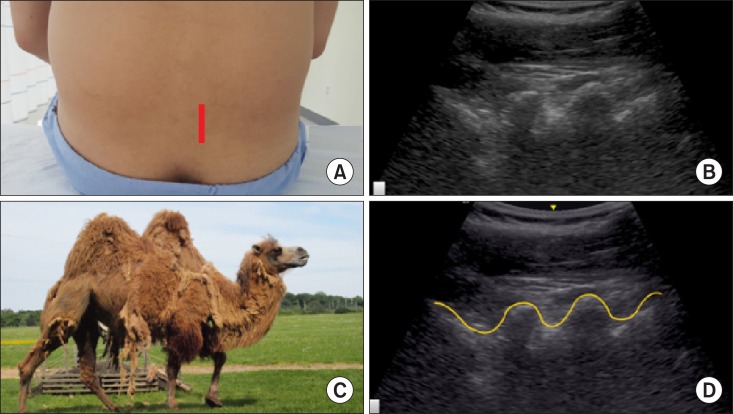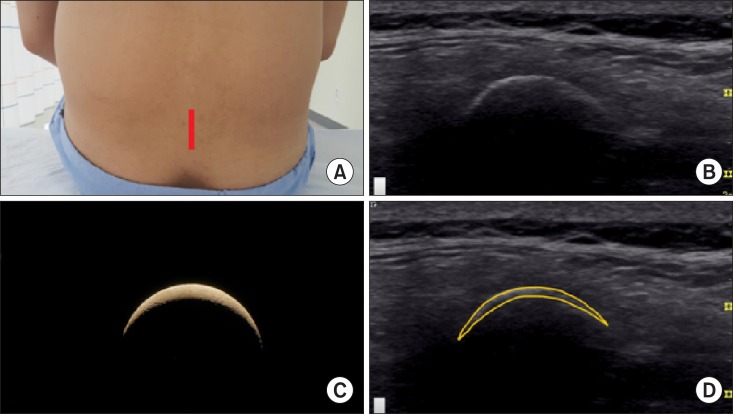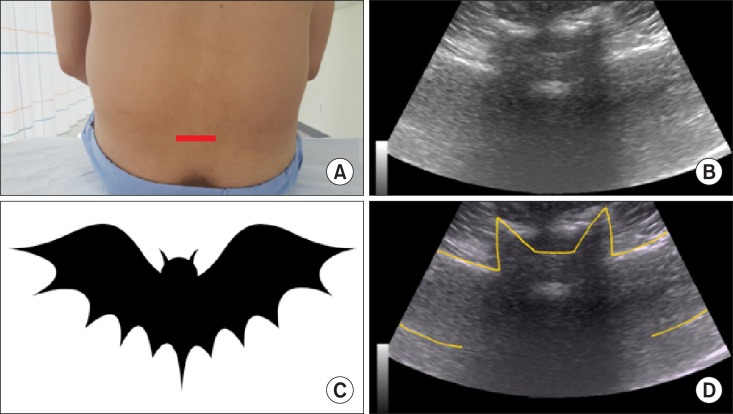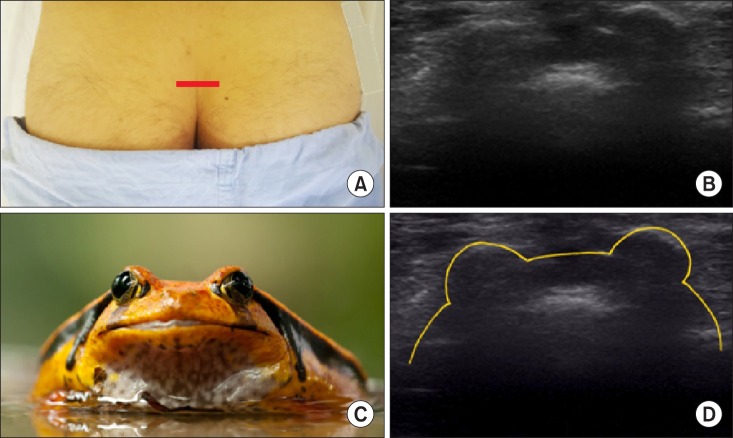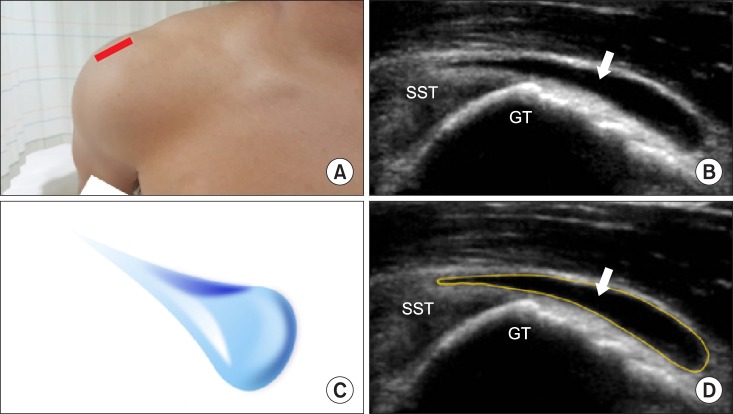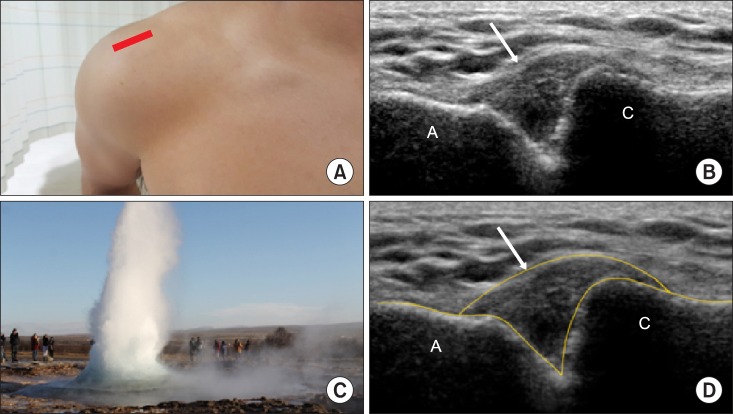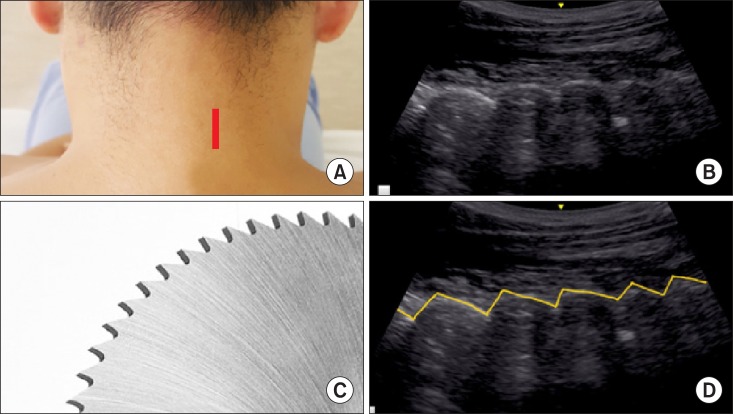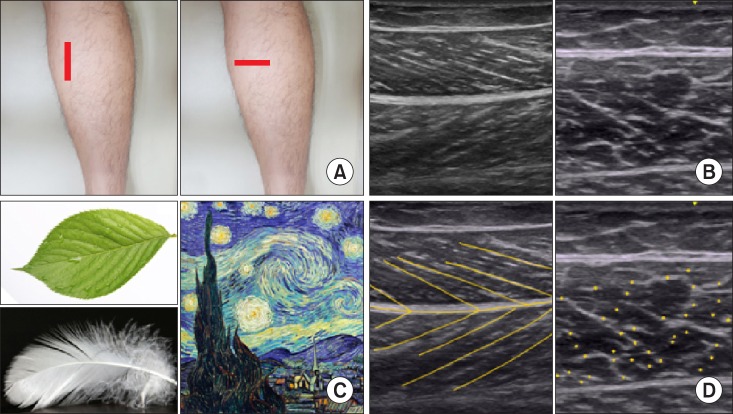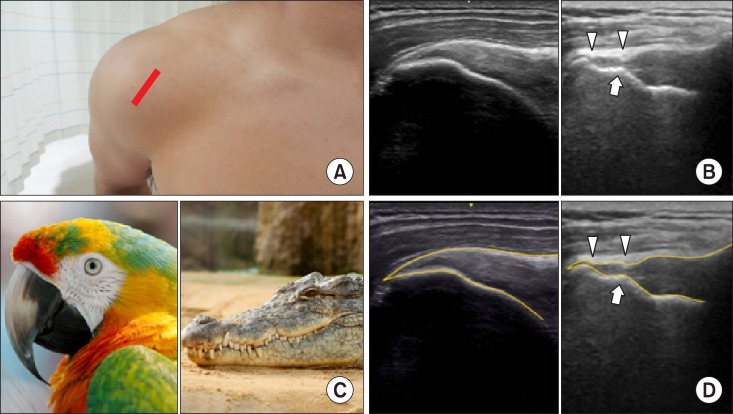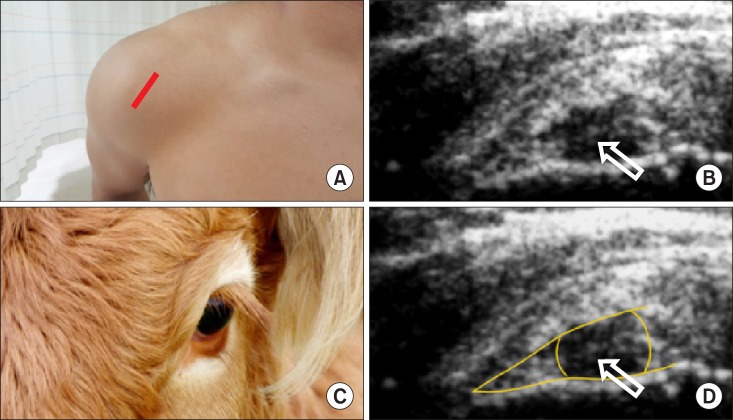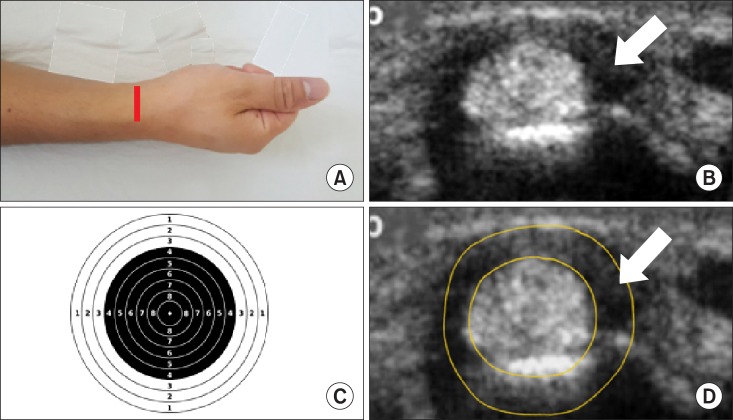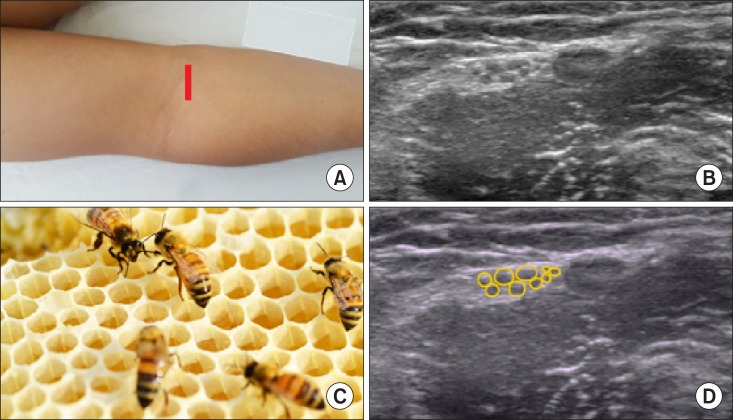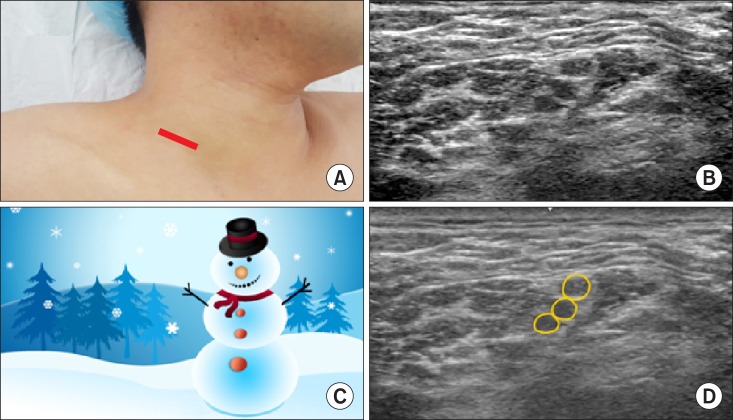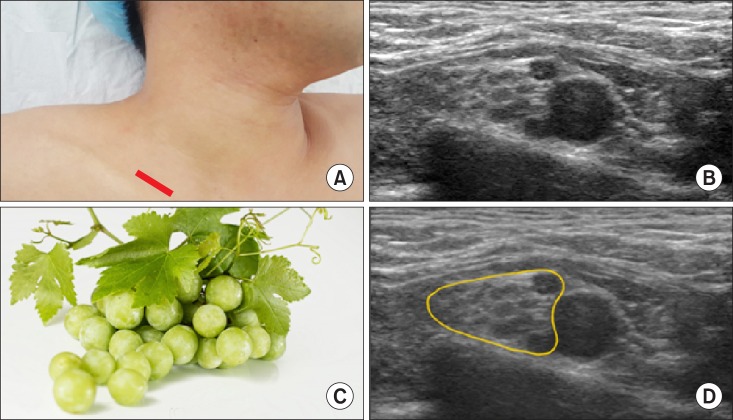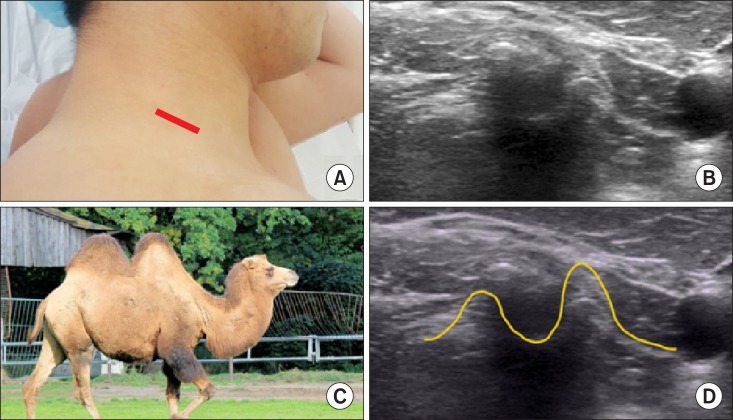Korean J Pain.
2016 Oct;29(4):217-228. 10.3344/kjp.2016.29.4.217.
A pictorial review of signature patterns living in musculoskeletal ultrasonography
- Affiliations
-
- 1Department of Anesthesia and Pain Medicine, School of Medicine, Pusan National University, Yangsan, Korea. pain@pusan.ac.kr
- KMID: 2354214
- DOI: http://doi.org/10.3344/kjp.2016.29.4.217
Abstract
- The musculoskeletal system is mainly composed of the bones, muscles, tendons, and ligaments, in addition to nerves and blood vessels. The greatest difficulty in an ultrasonographic freeze-frame created by the examiner is recognition of the targeted structures without indicators, since an elephant's trunk may not be easily distinguished from its leg. It is not difficult to find descriptive ultrasonographic terms used for educational purposes, which help in distinguishing features of these structures either in a normal or abnormal anatomic condition. However, the terms sometimes create confusion when describing common objects, for example, in Western countries, pears have a triangular shape, but in Asia they are round. Skilled experts in musculoskeletal ultrasound have tried to express certain distinguishing features of anatomic landmarks using terms taken from everyday objects which may be reminiscent of that particular feature. This pictorial review introduces known signature patterns of distinguishing features in musculoskeletal ultrasound in a normal or abnormal condition, and may stir the beginners' interest to play a treasure-hunt game among unfamiliar images within a boundless ocean.
Keyword
MeSH Terms
Figure
Reference
-
1. Smith J, Finnoff JT. Diagnostic and interventional musculoskeletal ultrasound: part 2. Clinical applications. PM R. 2009; 1:162–177. PMID: 19627890.
Article2. Moore RE. 2010 musculoskeletal ultrasound for the extremities: a practical guide to sonography of the extremities. Scotts Valley (CA): Createspace;2010. p. 9–11.3. Karmakar MK, Li X, Kwok WH, Ho AM, Ngan Kee WD. Sonoanatomy relevant for ultrasound-guided central neuraxial blocks via the paramedian approach in the lumbar region. Br J Radiol. 2012; 85:e262–e269. PMID: 22010025.
Article4. Chin KJ, Karmakar MK, Peng P. Ultrasonography of the adult thoracic and lumbar spine for central neuraxial blockade. Anesthesiology. 2011; 114:1459–1485. PMID: 21422997.
Article5. Nomura JT, Leech SJ, Shenbagamurthi S, Sierzenski PR, O'Connor RE, Bollinger M, et al. A randomized controlled trial of ultrasound-assisted lumbar puncture. J Ultrasound Med. 2007; 26:1341–1348. PMID: 17901137.
Article6. Karmakar MK. Ultrasound-guided central neuraxial blocks. In : Narouze SN, editor. Atlas of ultrasound-guided procedures in interventional pain management. New York (NY): Springer;2011. p. 161–178.7. Möller I, Bong D, Naredo E, Filippucci E, Carrasco I, Moragues C, et al. Ultrasound in the study and monitoring of osteoarthritis. Osteoarthritis Cartilage. 2008; 16(Suppl 3):S4–S7. PMID: 18760636.
Article8. Razek AA, Fouda NS, Elmetwaley N, Elbogdady E. Sonography of the knee joint. J Ultrasound. 2009; 12:53–60. PMID: 23397073.
Article9. van Holsbeeck M, Strouse PJ. Sonography of the shoulder: evaluation of the subacromial-subdeltoid bursa. AJR Am J Roentgenol. 1993; 160:561–564. PMID: 8430553.
Article11. Narouze S, Peng PW. Ultrasound-guided interventional procedures in pain medicine: a review of anatomy, sonoanatomy, and procedures. Part II: axial structures. Reg Anesth Pain Med. 2010; 35:386–396. PMID: 20607896.
Article12. Woodhouse JB, McNally EG. Ultrasound of skeletal muscle injury: an update. Semin Ultrasound CT MR. 2011; 32:91–100. PMID: 21414545.
Article13. Tekin L, Kara M, Ozçakar L. When the parrot's beak becomes the crocodile's mouth: a story on shoulder ultrasound. Rheumatol Int. 2013; 33:2447–2448. PMID: 22811012.
Article14. Lew HL, Chen CP, Wang TG, Chew KT. Introduction to musculoskeletal diagnostic ultrasound: examination of the upper limb. Am J Phys Med Rehabil. 2007; 86:310–321. PMID: 17413545.15. van Geffen GJ, Moayeri N, Bruhn J, Scheffer GJ, Chan VW, Groen GJ. Correlation between ultrasound imaging, cross-sectional anatomy, and histology of the brachial plexus: a review. Reg Anesth Pain Med. 2009; 34:490–497. PMID: 19920425.
Article16. Kim YD, Yu JY, Shim J, Heo HJ, Kim H. Risk of encountering dorsal scapular and long thoracic nerves during ultrasound-guided interscalene brachial plexus block with nerve stimulator. Korean J Pain. 2016; 29:179–184. PMID: 27413483.
Article17. Lee MJ, Koo DJ, Choi YS, Lee KC, Kim HY. Dexamethasone or dexmedetomidine as local anesthetic adjuvants for ultrasound-guided axillary brachial plexus blocks with nerve stimulation. Korean J Pain. 2016; 29:29–33. PMID: 26839668.
Article18. Park SK, Sung MH, Suh HJ, Choi YS. Ultrasound guided low approach interscalene brachial plexus block for upper limb surgery. Korean J Pain. 2016; 29:18–22. PMID: 26839666.
Article19. Kim YH. Ultrasound phantoms to protect patients from novices. Korean J Pain. 2016; 29:73–77. PMID: 27103961.
Article
- Full Text Links
- Actions
-
Cited
- CITED
-
- Close
- Share
- Similar articles
-
- RE: Musculoskeletal Applications of Elastography: a Pictorial Essay of Our Initial Experience
- Musculoskeletal Applications of Elastography: a Pictorial Essay of Our Initial Experience
- Value of Ultrasound in Rheumatologic Diseases
- Sonographic Findings of Common Musculoskeletal Diseases in Patients with Diabetes Mellitus
- How to perform a functional assessment of the fetal heart: a pictorial review

